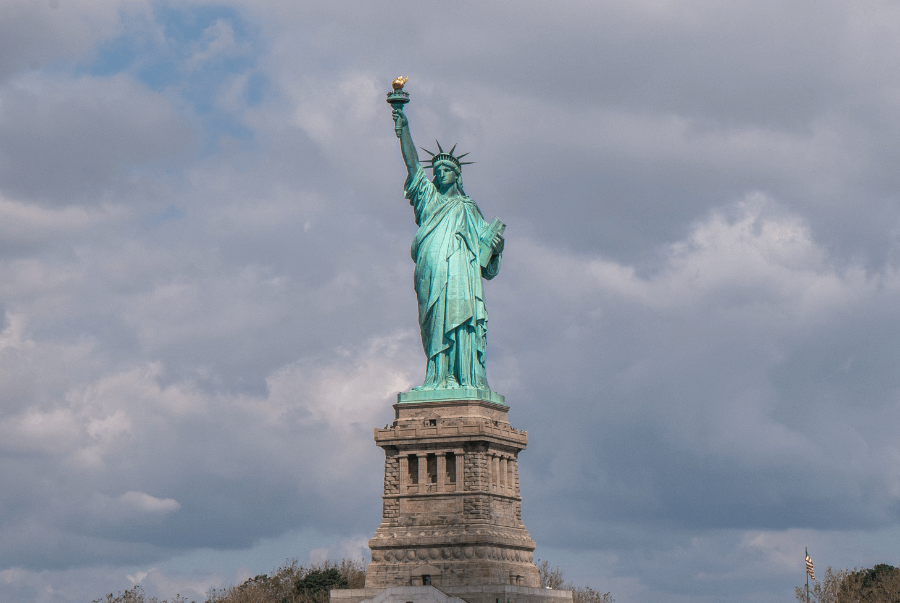
• 27 / 02 / 2019
Introduction
The Statue of Liberty, towering over New York Harbor, has long served as more than just a monument—rather, it is an enduring representation of democracy, freedom, and the unwavering spirit of the United States. We examine the historical foundations, symbolic components, and enduring influence of the Statue of Liberty on the American identity as a lighthouse of liberty as we delve into the profound significance of this iconic piece of Americana.
A Gift from France:
1. History and Purpose:
France gave the United States the Statue of Liberty, also referred to as Liberty Enlightening the World. French sculptor Frédéric Auguste Bartholdi created it, and on October 28, 1886, it was dedicated.
The two countries worked together to create the statue, which represents their enduring friendship and commitment to democracy and liberty.
2. Fundraising Efforts: The American public provided the pedestal that the statue is located on, demonstrating the broad support for the principles that Lady Liberty represents.
The pedestal was built thanks to donations from people all over the country, newspaper campaigns, and benefit concerts.
Symbolic Elements:
1. The Torch of Enlightenment: The statue holds a torch high, signifying enlightenment and the beacon of liberty. It stands for the notion that liberty drives out ignorance and darkness by shining a light on the way forward.
The flame has come to represent inspiration, hope, and the quest for a better future, and it has become an iconic image.
2. The Crown and the Seven Spikes: The Statue of Liberty's crown has seven spikes that stand in for the seven continents and seven seas, highlighting the allure of liberty around the world and the welcoming character of the United States.
The symbolism highlights how freedom is a universal concept that welcomes individuals from all walks of life.
Historical Significance:
1. Greeting Immigrants: The Statue of Liberty represented the start of a new life and the conclusion of a protracted journey for millions of immigrants who arrived in the United States in the late 19th and early 20th centuries.
For those looking for safety and opportunity, the statue came to represent the promise of a better future and evolved into a potent symbol of freedom and hope.
2. Lasting Emblem of Democracy: The Statue of Liberty has stood the test of time as a potent representation of American democracy, tenacity, and the unwavering quest of freedom.
Its image has been evoked at a number of historical events, such as civil rights demonstrations and suffragette rallies, enhancing its standing as a symbol of hope for people who support equality and justice.
Cultural Impact:
1. Iconography and Popular Culture: Lady Liberty has permeated American popular culture deeply. Her likeness is commonly used as a visual shorthand for the values of freedom and democracy in artwork, commercials, and political cartoons.
The statue's representation in music, literature, and film reinforces its status in popular culture.
2. National Monument and Tourism: The Statue of Liberty, which was designated as a national monument in 1924, welcomes millions of tourists every year. Due to its iconic status, travelers from all over the world consider it a must-see location.
Deepening the statue's cultural impact are the museum and pedestal, which provide information about the statue's background and the values it stands for.
Contemporary Interpretations:
1. International Symbol of Freedom: The Statue of Liberty has become a worldwide representation of democracy and freedom, going beyond its significance for the United States.
The statue is represented by replicas and images that can be found all over the world, signifying the shared desire for freedom and human rights.
2. Obstacles to Liberty:
The Statue of Liberty is still relevant today as a representation of freedom in the face of obstacles. Lady Liberty is frequently brought up in discussions about immigration, civil rights, and the pursuit of justice as a symbol of American ideals.
The statue's lasting influence sparks continuous debates regarding the country's adherence to the ideals it stands for.
Conclusion
The Statue of Liberty holds immense significance in America that goes well beyond its physical location in New York Harbor. It represents the principles of democracy, freedom, and the enduring spirit of the United States and is a living symbol. Lady Liberty has been instrumental in forming the character of the country, from its beginnings as a gift between nations to its current function as a beacon of hope for newly arrived immigrants. The Statue of Liberty is a testament to the enduring power of liberty and the shared commitment to the values that define the United States as a land of freedom and opportunity. It is a symbol that continues to inspire and resonate across generations.
Sign up at UNIPREP, your one-stop platform for global opportunities in education, business, career & life abroad.
Cookies help us evaluate website traffic and improve user experience.Your information will be aggregated with the data of all other users after you agree to our usage of cookies.
UNIABROAD LTD.
Suite 524, Citibase, The Atrium, 1 Harefield Rd, Uxbridge UB8 1EX, United Kingdom
UNIABROAD Technology Ltd.
165/1,Opp Brahmasthana Kalyana Mantapa, Sahukar Chenniah Road, TK Layout, Mysuru, Karnataka
Privacy Policy | Terms & Conditions | Disclaimer | Refund Policy

Privacy Policy | Terms & Conditions | Disclaimer | Refund Policy
2023 © All rights reserved by UNIABROAD LTD.